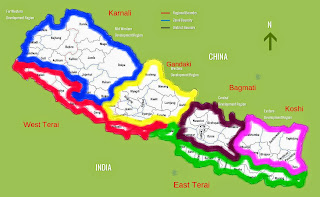नेपालको अहिलेको तथाकथित "लोकतंत्र" कस्तो छ भन्दा खेरी संसद भन्दा माथि राजनीतिक पार्टी र सबै भन्दा माथि दुई-चार जना पार्टी अध्यक्ष हरु। कहीं नभएको जात्रा हाँडी गाउँमा।
जब कि संसद आफैमा स्वाधीन हो --- लोकतन्त्रमा। सांसद हुन्छन्। संसदीय दल हुन्छ। पार्टी को व्हिप सम्म हुन्छ। तर त्यो व्हिप पार्टी ले पठाएको मान्छे होइन कि संसदीय दल ले आतंरिक निर्वाचन बाट चुनेको मान्छे हुन्छ। पार्टी अध्यक्ष सांसद हो भने, संसदीय दलको नेता हो भने संसद लाई त्यो व्यक्ति सँग मतलब हुन्छ नत्र भने हुँदैन।
सभामुख अथवा राष्ट्रपति सभामुख/राष्ट्रपति हुनु अगाडि कुनै पार्टीको मान्छे हुन सक्छ। तर सभामुख/राष्ट्रपति भए पछि त्यो व्यक्तिले कुनै पार्टी अथवा पार्टी अध्यक्ष को आदेश लिँदैन। तर नेपालमा केपी ओली ले आफ्नो पियन भा जस्तो गरेर सभामुख लाई जागीर बाट फाल्दिन्छु भनेर हप्कायेको इतिहास छ। त्यस लाई अलोकतांत्रिक चरित्र भन्ने कि बाहुन को जनजाति प्रतिको attitude भन्ने? दुबै।
संसद ले कानुन र सरकार बनाउने मात्र होइन कि आफ्ना विभिन्न कमिटी र सब कमिटी का माध्यमले सम्पुर्ण सरकारी संयत्र माथि बराबर निगरानी गरिरहेको हुन्छ। त्यसमा सत्ताधारी पार्टी का सांसद मात्र संलग्न हुन्छन् भन्ने होइन।
संसदको स्वाधीनता स्थापित गर्दै जानुपर्छ। लोकतंत्र १९ दिनमा जम्मा हुने भीड़ होइन, वर्षौं, दशकों लगाएर परिष्कृत गर्दै जाने संस्कृति र संस्कार हो।
संसदको त्यति ठुलो महत्त्व र स्थान हुनाले नै निष्पक्ष निर्वाचन चाहिएको हो।
जब कि संसद आफैमा स्वाधीन हो --- लोकतन्त्रमा। सांसद हुन्छन्। संसदीय दल हुन्छ। पार्टी को व्हिप सम्म हुन्छ। तर त्यो व्हिप पार्टी ले पठाएको मान्छे होइन कि संसदीय दल ले आतंरिक निर्वाचन बाट चुनेको मान्छे हुन्छ। पार्टी अध्यक्ष सांसद हो भने, संसदीय दलको नेता हो भने संसद लाई त्यो व्यक्ति सँग मतलब हुन्छ नत्र भने हुँदैन।
सभामुख अथवा राष्ट्रपति सभामुख/राष्ट्रपति हुनु अगाडि कुनै पार्टीको मान्छे हुन सक्छ। तर सभामुख/राष्ट्रपति भए पछि त्यो व्यक्तिले कुनै पार्टी अथवा पार्टी अध्यक्ष को आदेश लिँदैन। तर नेपालमा केपी ओली ले आफ्नो पियन भा जस्तो गरेर सभामुख लाई जागीर बाट फाल्दिन्छु भनेर हप्कायेको इतिहास छ। त्यस लाई अलोकतांत्रिक चरित्र भन्ने कि बाहुन को जनजाति प्रतिको attitude भन्ने? दुबै।
संसद ले कानुन र सरकार बनाउने मात्र होइन कि आफ्ना विभिन्न कमिटी र सब कमिटी का माध्यमले सम्पुर्ण सरकारी संयत्र माथि बराबर निगरानी गरिरहेको हुन्छ। त्यसमा सत्ताधारी पार्टी का सांसद मात्र संलग्न हुन्छन् भन्ने होइन।
संसदको स्वाधीनता स्थापित गर्दै जानुपर्छ। लोकतंत्र १९ दिनमा जम्मा हुने भीड़ होइन, वर्षौं, दशकों लगाएर परिष्कृत गर्दै जाने संस्कृति र संस्कार हो।
संसदको त्यति ठुलो महत्त्व र स्थान हुनाले नै निष्पक्ष निर्वाचन चाहिएको हो।



